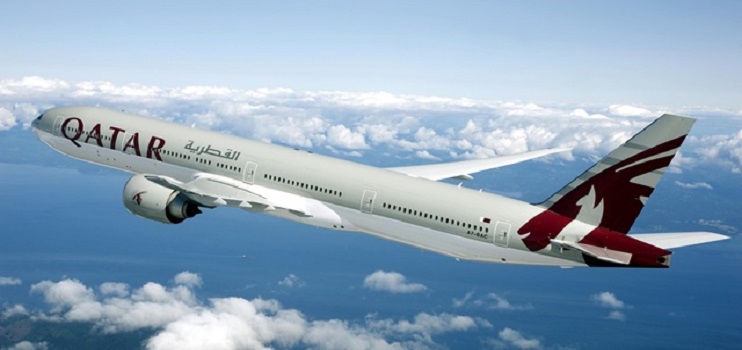Qatar Airways soars
01 March, 2016
4 min read
By joining our newsletter, you agree to our Privacy Policy


One of the Big Three Arabian Gulf carriers, Qatar Airways, is making major changes to its network strategy as it begins expanding its reach in Australia.
As the first Qatar Airways 335-seat Boeing 777-300ER touches down in Sydney on the evening of March 2, the airline is changing the timing of its connections at its Doha airport headquarters to avoid conflict with the 11pm to 6am flight curfews at both Sydney and Adelaide, which it will begin serving in two months’ time.
Survey: Does 10 rather than 9 a breast seating on the 777 influence who you fly with?
That means moving the Sydney and Adelaide departures from Doha out of the main departures wave in the hours immediately following midnight, local time, and back to mid-evening. The daily Sydney service leaves at 8.10pm and the Adelaide Airbus A350-900 daily departs at 9pm from May 2.
Existing daily flights to Melbourne, currently leaving Qatar around 1am, will also join the new mid-evening departures wave in the next few weeks, the 8.40pm departure and the earlier arrival time allowing onward Australian connections for the first time.
The Melbourne service currently does not arrive until 10.25 pm. The new time, 6.10pm (5.10pm after the end of daylight saving next month), will enable connections with cities like Hobart and Canberra with Qatar’s oneworld partner Qantas.
At the other end of the network, Qatar Airways, has boosted frequencies from its European network of more than 20 online cities. The new Australian schedule enables one-stop connections from European capitals with mid-morning departures from Europe for Sydney, Melbourne and Adelaide.
Only Qatar’s daily Boeing 777-300ER service to the Western Australian capital Perth will remain in its post-midnight departure slot from Doha.
As recently as 2012, Qatar Airways chief executive Akbar al Baker pledged he would never fly to Sydney while it had a curfew, which, he said, made scheduling impossible for a hub-and-spoke carrier like Qatar Airways.
"The curfew is a very big factor (of) not operating to Sydney and the operating cost out of Sydney is very high," Al Baker said at the time. "Melbourne is a more efficient use of airplanes because it is a 24-hour airport and Sydney is not.”
But the exclusion of Australia’s biggest city was hurting the airline’s global network and it pushed hard for extra rights in government-to-government negotiations in 2015.
After the deluge of new capacity already allocated to Gulf giant Emirates of Dubai and its neighbour Etihad of Abu Dhabi, Qatar Airways had been restricted to just two flights a day from Australia’s four main cities (Brisbane, Sydney, Melbourne and Perth) and used that entitlement for the Melbourne and Perth services.
The new air services treaty, signed in September 2015, allows just one extra daily flight, which is being used to launch Sydney.
The fourth daily service to Adelaide is possible because it is outside the destination restrictions specified by the Australian government.
“We have been very happy with the development of both routes (Melbourne and Perth), but disappointed with the time it has taken to improve our traffic rights which allow us to operate more frequencies on both these routes and, of course, to other Australian cities,” Qatar Airways chief commercial officer Hugh Dunleavy told AirlineRatings.com.
“We are very much in favour of competition and are eager to be able to compete on the Australian routes.
“(Destinations are) certainly a distinct aspect of our appeal, but I believe our goal is to appeal to the world’s consumers and airline travellers because I believe we have one of the world’s best products out there.
"We believe it is important to differentiate ourselves and we believe in this level of investment not just in the physical aircraft, but the type of product on board and the quality of the service the staff provide – that attention to detail I think makes us second to none.”
Next Article
Virgin gets nod for Tiger deal

Get the latest news and updates straight to your inbox
No spam, no hassle, no fuss, just airline news direct to you.
By joining our newsletter, you agree to our Privacy Policy
Find us on social media
Comments
No comments yet, be the first to write one.
